Pest Library
Nashville sees its fair share of pest problems, and we’ve treated just about all of them. Ants in the kitchen? Roaches in the garage? Mice in the attic? Wasps building nests in the eaves? Whether it’s inside, outside, or both, we know what to look for and how to take care of it!
Some pests need one treatment. Others take a little more strategy. We adjust the products and approach depending on what’s going on and where it’s happening. No guesswork or one-size-fits-all plans here.
Below, you’ll find the pests we often encounter and how we treat them when they show up.
Ants
Nashville sees its fair share of pest problems, and we’ve treated just about all of them. Ants in the kitchen? Roaches in the garage? Mice in the attic? Wasps building nests in the eaves? Whether it’s inside, outside, or both, we know what to look for and how to take care of it!
Some pests need one treatment. Others take a little more strategy. We adjust the products and approach depending on what’s going on and where it’s happening. No guesswork or one-size-fits-all plans here.
Below, you’ll find the pests we often encounter and how we treat them when they show up.
Odorous House Ants
These ants love moisture and pop up near sinks, dishwashers, and baseboards. They travel in long trails and give off a strong smell when crushed. Sprays won’t cut it, though. You’ve got to treat the colony to stop the cycle.
Argentine Ants
These ants love moisture and pop up near sinks, dishwashers, and baseboards. They travel in long trails and give off a strong smell when crushed. Sprays won’t cut it, though. You’ve got to treat the colony to stop the cycle.
Pavement Ants
Pavement ants are easy to spot near sidewalks, driveways, and along the edges of buildings. They nest under concrete and sneak inside through small cracks, especially after rain. Once they find food or warmth, they can settle in quickly.
Carpenter Ants
Carpenter ants are bigger than most and tend to stay out of sight. They hollow out damp or rotting wood to make their nests, often behind siding, around windows, or near rooflines. If they’re active, they won’t stop until the nest is gone, so professional pest control is often the only option to prevent an infestation.
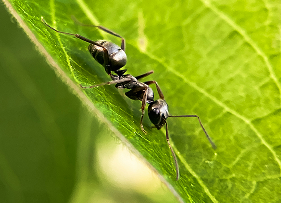
Spiders
Nashville sees its fair share of pest problems, and we’ve treated just about all of them. Ants in the kitchen? Roaches in the garage? Mice in the attic? Wasps building nests in the eaves? Whether it’s inside, outside, or both, we know what to look for and how to take care of it!
- We regularly see:
- Cellar spiders
- House spiders
- Wolf spiders
- Brown recluse spiders
Most spiders don’t pose a threat, but seeing them indoors again and again is a sign they’ve settled in. Our treatment includes web removal, targeted applications around baseboards and corners, and a review of any pest activity that may draw them in. Spiders follow their food, so reducing insects is key to keeping them out for good.

Wasps
Wasps can be aggressive and territorial, especially when they build nests in areas where people might accidentally get too close, like doorways, patios, rooflines, or near play spaces. Nests often turn up under eaves, in shrubs, on fences, or tucked into siding and vents. Once they’re active, they can make outdoor spaces hard to enjoy.
- We most often treat:
- Paper wasps
- Yellow jackets
- Hornets (less common, but still a concern)
Each builds a different kind of nest, but all respond best to direct treatment. We remove active nests, treat high-traffic wasp zones, and apply a product that helps prevent them from rebuilding in the same spots.
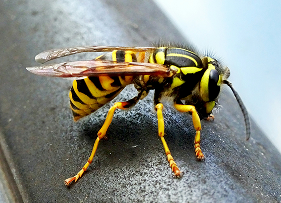
Mosquitoes
Mosquitoes can take over a yard fast. They gather around porches, hover near bushes, and seem to be waiting for you the second you step outside. Once they settle in, they’re hard to ignore and even harder to avoid. And it doesn’t take much to get them going! A little standing water and some shade are all they need to breed.
Beyond the bites, mosquitoes bring real risks. Around here, they’ve been linked to the spread of West Nile virus and other mosquito-borne illnesses. When populations grow, so does the chance of exposure, especially for kids, pets, and anyone who spends time outside.
If you’re constantly swatting them away or avoiding parts of your yard altogether, it’s time to get ahead of it. Visit our Mosquito Control page to see how we help bring the numbers down and keep them from coming back.
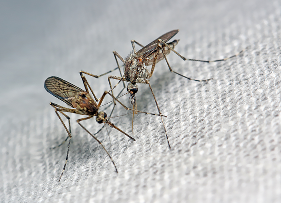
Termites
Termites are quiet, but the damage they cause can be serious. They move through wood from the inside out, meaning you may not notice a problem until it’s grown. Signs are subtle: soft wood, bubbling paint, stuck doors, or small lines of mud near the foundation.
The species we see most often in Middle Tennessee are subterranean termites. They live underground, travel through hidden tunnels, and feed on anything with cellulose. That includes wood framing, trim, drywall, and more. They work slowly but steadily, which makes early detection and consistent monitoring key.
If you’ve noticed warning signs or want to stay ahead of the risk, we’re licensed for WDO inspections and experienced with the patterns we see in this area.
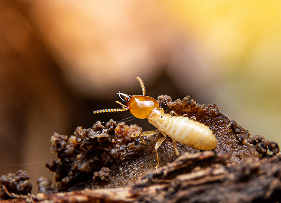
Centipedes
Centipedes usually appear in damp, quiet areas like basements, bathrooms, and crawl spaces. They move fast, stay low to the ground, and tend to startle people when they show up indoors. While they’re not dangerous, they’re not exactly welcome either, especially when they start appearing more regularly.
Most of the time, they’re following moisture or looking for food. That’s why you’ll often find them near sinks, tubs, or along baseboards where other bugs might be active. Since they feed on insects, their presence can point to underlying pest issues.
We treat centipede activity with a combination of repellent products and a focus on the areas that attract them most. That means treating baseboards, utility areas, and entry points while also reducing the conditions that bring them in.
If you’ve started seeing them indoors, we’ll help track down what’s drawing them in and keep the activity from spreading.
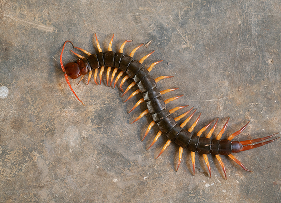
Earwigs
Earwigs prefer damp, shaded areas outside under mulch, rocks, flower pots, or tucked along the edges of buildings. They occasionally make their way indoors, especially after heavy rain or changes in weather. Once inside, they stick to basements, bathrooms, and laundry rooms.
We focus on treating the areas where earwigs hide and the places they’re getting in. That includes cracks around the foundation, utility entry points, and other gaps where moisture collects. We also look for conditions outside your home that may attract them in the first place.
If they show up indoors, we’ll take care of it and help prevent the next wave from getting in.

Beetles
Beetles come in all shapes and sizes, but most of the ones we deal with around homes are either crawling across floors or gathering near windows and lights. Some are drawn to moisture, others to food or stored items. A few types can cause real damage, especially when they settle into baseboards, pantries, or dry goods.
The most common types we see include:
- Ground beetles
- Carpet beetles
- Pantry pests like grain and flour beetles
- Wood-damaging beetles in crawlspaces or older framing
Most beetles enter your home through small openings around doors, windows, or utility lines. Once they’re in, they’re hard to track and even harder to get rid of without targeted treatment.
We focus on identifying the beetle type, treating the areas where they’re active, and finding out what’s drawing them in. If you’ve started seeing them indoors or around storage areas, we’ll help clear them out and keep them from coming back.
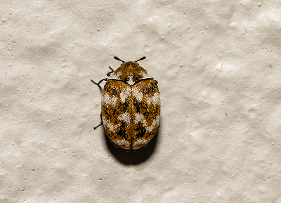
Fleas & Ticks
Fleas and ticks spread quickly and can be hard to control once they’re in. Fleas spread through rugs, furniture, and bedding, and their bites can cause itching, rashes, or allergic reactions in both people and pets. Ticks often go unnoticed until they’ve attached; some even carry illnesses like Lyme disease or Rocky Mountain spotted fever.
These pests usually start outside. Fleas gather in shaded parts of the yard and spots where pets rest. Ticks hide in tall grass, overgrown landscaping, and along fences or wooded edges. Once they attach to a person or pet, they can make their way indoors without being noticed.
Inside, things get worse fast. Fleas reproduce quickly and can spread through multiple rooms in just a few days. Ticks often stay low to the ground, hiding near baseboards, furniture legs, or in corners.
We treat both indoor and outdoor areas to break the cycle and get ahead of the activity. That means looking for where the pests are hiding, treating the spaces where they tend to spread, and helping prevent another wave from showing up later.

Carpenter Bees
Carpenter bees drill into unfinished or exposed wood to create nesting tunnels, regularly returning to the same spots each season. They are easy to spot, leaving behind round holes along trim or fascia boards, sawdust on the ground, and buzzing activity near rooflines, decks, or overhangs.
Over time, repeated nesting can weaken wood and cause visible damage, especially in areas that are already weathered or unsealed. Unlike termites, carpenter bees don’t eat wood, but their tunneling still creates structural wear and invites moisture and decay.
Cima treats carpenter bee activity by dusting and treating the holes directly, reaching inside the tunnel to target active nests. This helps stop the current activity and makes it harder for bees to reuse the same spots later on.
For homes with frequent carpenter bee problems, sealing up treated areas and staying ahead of the nesting season can make a big difference. Our team handles the treatment and the preventative strategy to help keep the damage from spreading year after year.
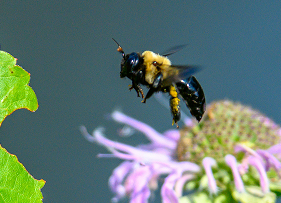
Silverfish
Silverfish are fast, light-sensitive insects that tend to stay out of view. They often hide in bathrooms, basements, and utility spaces where humidity and humans are minimal. Most people don’t notice them until something gets damaged or they catch one darting across the floor at night.
These pests feed on starchy materials like glue, paper, and natural fibers. Books, wallpaper, and stored clothing are common targets, and the damage often starts small. Left untreated, silverfish can spread to other areas of the home and become a more consistent issue over time.
We treat silverfish by identifying the areas they use for shelter and reducing the conditions that let them stick around. We focus on high-moisture zones, storage areas, and any spots where clutter or warmth creates the right environment for them to stay hidden.
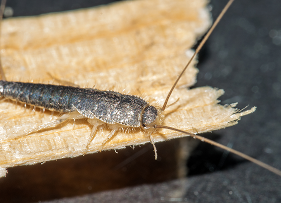
Cockroaches
Roaches don’t wait for an invitation. Once they’re inside, they move fast and find the places that are hardest to reach, under appliances, behind baseboards, inside wall voids, and anywhere food or moisture is easy to access.
They’re drawn to warm, humid spaces with easy access to food and water. Kitchens and bathrooms are usually the first spots they settle into, but they don’t stay put for long. Once roaches find what they need, they spread through cabinets, wall voids, pantries, and anywhere else that offers shelter.
Roaches reproduce quickly, and once they’ve settled in, it takes a targeted approach to get ahead of them. We use non-repellent products that reach the places roaches are nesting and help stop the population at its source.
Every property is different, so we adjust the treatment based on the activity level and how roaches move through the space. Instead of treating surface areas only, we focus on where they’re hiding, how they’re getting around, and what’s allowing them to stick around in the first place.
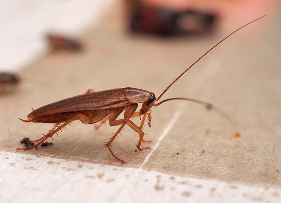
Bed Bugs
Bed bugs are small, quiet, and hard to catch early. They stay close to where people rest, like inside mattress seams, behind headboards, and in the folds of upholstered furniture. Most people don’t see the bugs themselves right away. The first signs are usually small bites, tiny stains on bedding, or a feeling that something’s off.
They’re easily brought in through travel, shared housing, or secondhand items. Once inside, they spread quickly from room to room, often settling in behind baseboards, light switches, or inside nearby furniture.
At Cima, we take the time to determine what stage the activity is in and where it’s showing up. We treat the areas that matter, skip the ones that don’t, and keep the approach focused and steady.
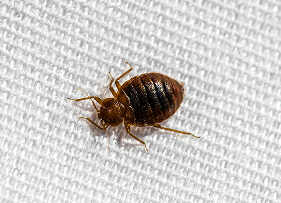
Mice & Rats
Rodents are quick to move in and even quicker to find the places you don’t look often. Once inside, they tuck themselves behind appliances, into wall voids, or along the back of a pantry shelf, anywhere quiet, warm, and close to food.
Most people don’t see them right away. What usually gives them away are the signs they leave behind, like scratching sounds at night, chewed corners on packaging, or droppings near baseboards or under the sink. If they’re active, it won’t stay subtle for long.
Cima builds every rodent plan around your property’s layout and what we’re seeing. We use a mix of bait stations, snap traps, and glue boards placed with care, not guesswork. And if there are openings that need to be sealed, we’ll help point those out so the problem doesn’t keep repeating itself.
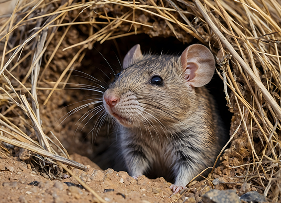
Seen Something Crawling and Want It Gone?
Let us know what you’ve noticed, and we’ll take it from there. We know the pests in this area and how to keep them out for good.
